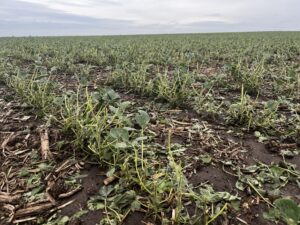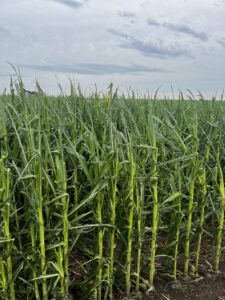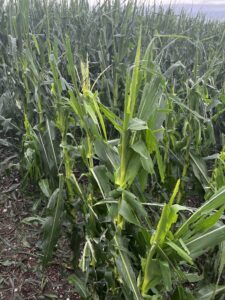Illinois Crop Update – July 26, 2024
Kathryn Seebruck – Commercial Agriculture Educator
Stephenson County
Soil Conditions: Moderately Wet (soil is damp, standing water may be present in low areas, water bodies are full)
After last week’s storms, the corn that was most heavily impacted (which was minimal) has mostly come back up. Everything still looks very healthy as we continue to receive rainfall. Corn is silking and soybeans are anywhere between R3 and R5. I have seen some rootworm beetles and subsequent silk clipping but not in high amounts.…








